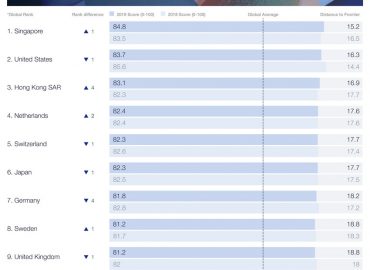By Cai Ordinario, April 4 2019; Business Mirror
https://businessmirror.com.ph/2019/04/04/adb-cuts-phl-outlook-on-budget-global-woes/
Image Credit to Philippine Star
THE delay in the passage of the national budget, as well as the slowdown in the global economy, are some of the reasons that forced the Asian Development Bank (ADB) to cut its growth forecast for the Philippines this year.
Based on its Asian Development Outlook report, the Ma-nila-based multilateral development bank now forecasts the Philippine economy to grow at 6.4 percent, slower than the 6.7 percent it estimated in the ADO Supplement released in
December 2018.
In terms of inflation, the ADB said commodity prices will be slower than expected this year at 3.8 percent from the initial estimate of 4 percent. In 2020, the ADB estimates that GDP growth will also be at 6.4 percent, while inflation will likely average 3.5 percent.
“Yes, the delay in the approval of the budget has slowed expenditure but the government will have opportunities to catch up.
So once it is approved, we think it [spending] will catch up,” ADB Philippines Country Director Kelly Bird said.
The delay in the approval of the budget and decision of the Commission on Elections (Comelec) to grant exceptions to big-ticket infrastructure projects from the election ban could affect growth this year.
However, ADB said its growth estimate for the Philippine economy is still higher than the 6.2-percent GDP growth posted in 2018. The ADB said the country is one of three Southeast Asian countries that are expected to outpace its growth in 2018 this year.
The report stated that in half of the 10 subregional economies in Southeast Asia, growth is forecast to slow this year, while Indonesia and the Lao PDR will be unchanged; and Brunei Darussalam, Myanmar, and the Philippines will post higher growth.
“There are two reasons. One, you are least vulnerable to a sharp slowdown in exports. A lot of the other countries are very export-intensive. Second is the government public spending on infrastructure. It has a large infrastructure program, it has increased last year on infrastructure, it reached 6 percent of GDP [and] we expect that to continue above 6 percent. And that’s a bit different from its neighboring countries. The Philippines has a major infrastructure program,” Bird explained.
The rollout of priority public investments in infrastructure, such as bridges, expressways, ports, and railways nationwide will ensure that prospects for private investment remain bright, given better access to markets and job opportunities. Momentum in private construction is expected to be sustained by continued strong demand for office and retail space and housing.
In addition, the services and manufacturing sectors will also be the main growth drivers in the near term. Strong retail trade and expansion in business-process outsourcing will continue to spur growth in services.
“The Philippine economy is on a healthy growth trajectory, with public and private investment sustaining strong growth for the economy this year and next. The risks to the growth outlook are tilted on the downside, with rising local investments likely offsetting any impact from a faster-than-expected slowdown in the global economy,” Bird said.
Inflation is expected to ease to 3.8 percent in 2019 and 3.5 percent in 2020 as global oil prices moderate, food supply improves with a recent law replacing quantitative restrictions on rice imports with tariffs, and last year’s monetary tightening continues to be effective, according to the report.
A major policy challenge is the structural and policy impediments to agriculture growth, the report said. Agriculture has been underperforming for the past two decades, growing by an average of 1.5 percent annually from 2011 to 2018.
With half of the country’s population residing in rural areas and agriculture providing a quarter of the country’s total employment, farm and off-farm income generating activities are critical for fostering inclusive growth.
The law liberalizing rice importation and establishing the Rice Competitiveness Enhancement Fund provides a unique opportunity to lift rural incomes by enhancing farm productivity and helping farmers to produce higher-value crops.
More needs to be done, however, such as investing in rural infrastructure, better irrigation, crop insurance, and innovation that engage private sector providers of extension services to farmers. At the same time, it is important for the government to support emerging growth industries in rural areas, like tourism, that generate off-farm income.


